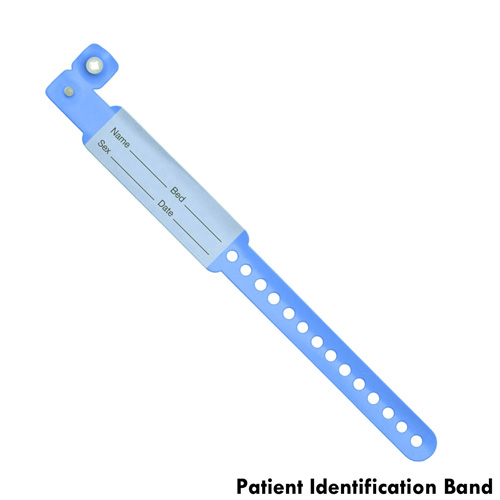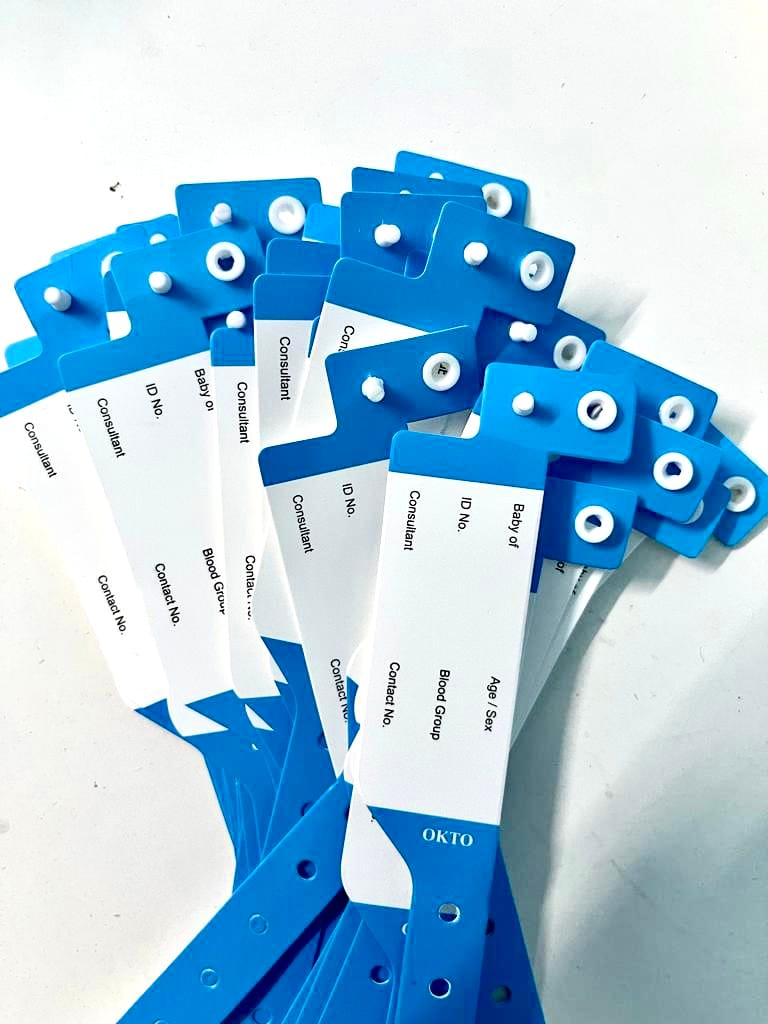Patient Identification Band: A Vital Device for every single Doctor
Patient Identification Band: A Vital Device for every single Doctor
Blog Article
Enhancing Safety And Security: The Significance of Person Identification Bands in Medical Care
In the realm of medical care, the effectiveness of person identification bands can not be overemphasized, as they act as a basic protect versus misidentification and subsequent errors. These bands, often neglected, have vital details that is vital for making sure patient safety and ideal therapy outcomes. The execution of effective identification procedures presents numerous obstacles that healthcare companies must navigate. As we check out the complex duty of these bands, it ends up being evident that their significance extends past mere recognition, elevating inquiries concerning best practices and future advancements in person safety and security.
Overview of Patient Identification Bands
Person recognition bands play a critical duty in making sure the security and accuracy of person treatment in health care settings. These bands, generally endured the wrist or ankle joint, function as a crucial tool for validating client identity, thereby decreasing the danger of errors in therapy, medicine management, and various other healthcare treatments. Made from durable products, client recognition bands commonly include crucial info such as the patient's name, day of birth, medical document number, and barcodes or QR codes for scanning.
The application of client recognition bands is important in numerous healthcare settings, including hospitals, outpatient centers, and long-term care establishments. They contribute to an organized method in person administration, making it possible for healthcare specialists to quickly and precisely recognize clients, specifically in high-pressure situations where quick decision-making is essential.
In addition, making use of these bands is lined up with regulative criteria targeted at enhancing patient safety and security - Patient Identification Band. By making certain that each patient's information is conveniently obtainable and easily verifiable, medical care service providers can keep a high standard of treatment, decrease the occurrence of damaging events, and foster a culture of safety within healthcare institutions
Advantages of Accurate Recognition
Exact recognition is essential to improving client security and care quality in healthcare settings. It offers as the initial line of protection against mistakes that could lead to adverse patient end results. By making certain that each person is properly determined through reliable methods, such as person identification bands, doctor can considerably minimize the threat of misidentification, which can cause unsuitable therapies, medicine mistakes, and even medical mix-ups.
Furthermore, exact person identification facilitates reliable communication amongst health care groups. When all personnel members can constantly identify people, they can share important information much more successfully, resulting in far better sychronisation of treatment. This is particularly vital in emergency scenarios where timely treatments are essential.
In addition, accurate recognition sustains compliance with governing standards, consequently reducing the danger of legal consequences for health care centers. It fosters depend on in between clients and doctor, as clients really feel more protected recognizing that their identities are being protected.

Usual Challenges Faced
Guaranteeing efficient patient recognition in health care settings offers a variety of obstacles that can jeopardize safety and care top quality. People might arrive in a state of confusion or distress, making accurate recognition difficult.
An additional challenge is the reliance on human aspects in identification treatments. Health care experts might unintentionally misinterpret or neglect identification methods, especially in high-stress environments such as emergency situation departments. This can bring about errors, including the administration of inaccurate therapies or medicines.
Technological problems also posture obstacles. Digital health record (EHR) systems are designed to improve patient recognition, system blackouts or user errors can interrupt the procedure. In addition, the physical design of individual ID bands can result in readability concerns, especially in situations where bands are harmed or covered.
Lastly, inconsistent training amongst team pertaining to identification procedures can lead to gaps in knowledge and practice. Resolving these difficulties is essential for boosting individual safety and making certain that identification bands serve their designated purpose successfully.
Finest Practices for Application
To effectively apply patient identification bands in medical care settings, organizations must adopt a diverse strategy that focuses on modern technology, standardization, and training combination. Standardization entails developing clear protocols for the style, application, and usage of recognition bands throughout all departments. This guarantees consistency and reduces the danger of errors connected to variations in band types or classifying approaches.


Training is crucial for all medical care staff to guarantee they understand the importance of accurate individual recognition, just how to correctly apply and read recognition bands, and the treatments to adhere to in case of disparities. Routine workshops and refresher course courses can strengthen this understanding and promote a society of safety.
Technology assimilation plays a pivotal function in boosting the efficiency of person recognition bands. Making use of barcode scanning or RFID modern technology can improve the identification procedure, enabling for real-time confirmation of patient identities. Additionally, electronic health and wellness record systems ought to be set up to include alerts for mismatches between the recognition band and client data.
Future Trends in Patient Security
As health care continues to advance, the emphasis on patient security is likely to magnify, driven by advancements in modern technology and a better understanding of systemic risks. Arising trends suggest a change towards more incorporated systems that take advantage of data analytics, artificial intelligence, and artificial intelligence to improve person identification procedures. These Discover More modern technologies can assist recognize potential safety problems before they intensify, thereby minimizing mistakes connected with misidentification.
In addition, the application of blockchain innovation might revolutionize how patient data is firmly shared amongst healthcare providers, making sure that recognition bands are continually accurate and current. This will certainly not just enhance individual safety however likewise promote smooth interaction across multidisciplinary teams.

In enhancement, the growing concentrate on customized medicine is anticipated to affect patient safety and security procedures. By including demographic and genetic details into identification systems, healthcare experts can tailor treatments better, decreasing the dangers of damaging reactions due to misidentification.
Conclusion
Finally, client recognition bands function as a vital part in enhancing safety within healthcare settings. By assisting in accurate client identification, these bands substantially decrease the risk of mistakes related to misidentification, inappropriate treatments, and medication administration. Despite difficulties in implementation, adherence to finest techniques and the assimilation of arising technologies can additionally improve their performance. Inevitably, the ongoing focus on robust identification protocols will certainly add to improved client end results and general safety in medical care additional info settings.
In the world of health care, the efficiency of client identification bands can not be overemphasized, as they serve as an essential guard against misidentification and succeeding mistakes.Patient identification bands play a vital duty in making sure the safety informative post and accuracy of client treatment in medical care settings. Made from long lasting materials, patient recognition bands usually consist of crucial details such as the individual's name, day of birth, medical document number, and barcodes or QR codes for scanning.
By making sure that each individual is properly identified via dependable methods, such as client recognition bands, health care suppliers can substantially decrease the risk of misidentification, which can lead to inappropriate treatments, medication mistakes, and also medical mix-ups.
In final thought, patient recognition bands serve as a crucial part in boosting safety within medical care environments. Patient Identification Band.
Report this page